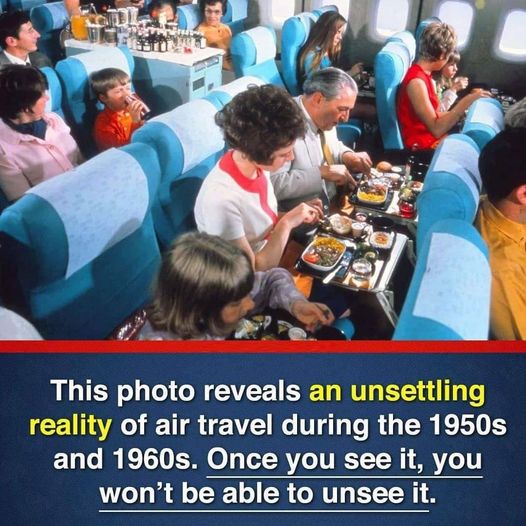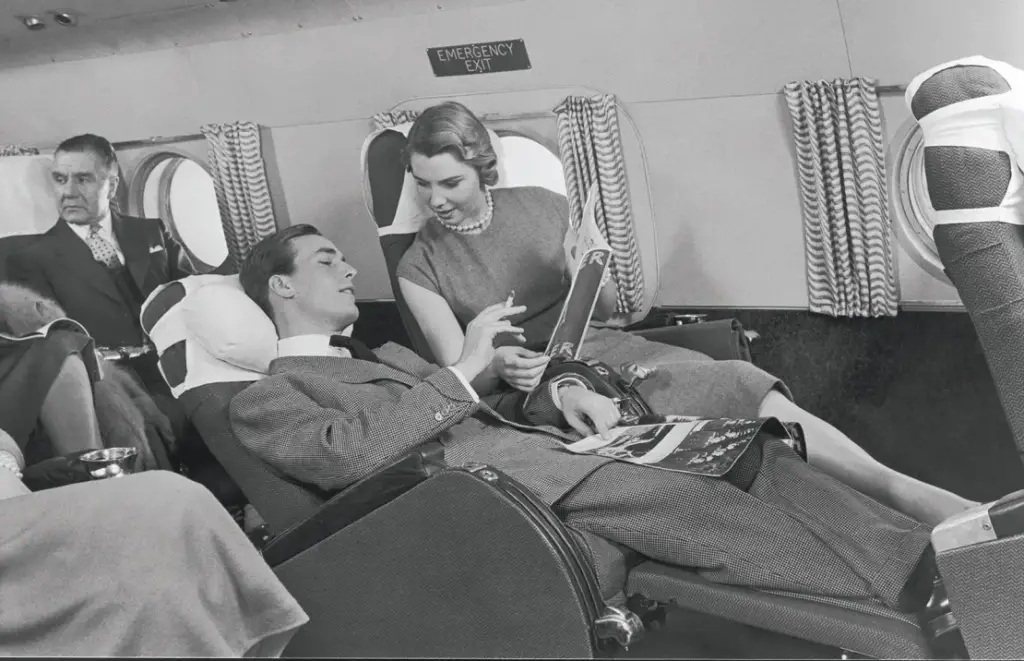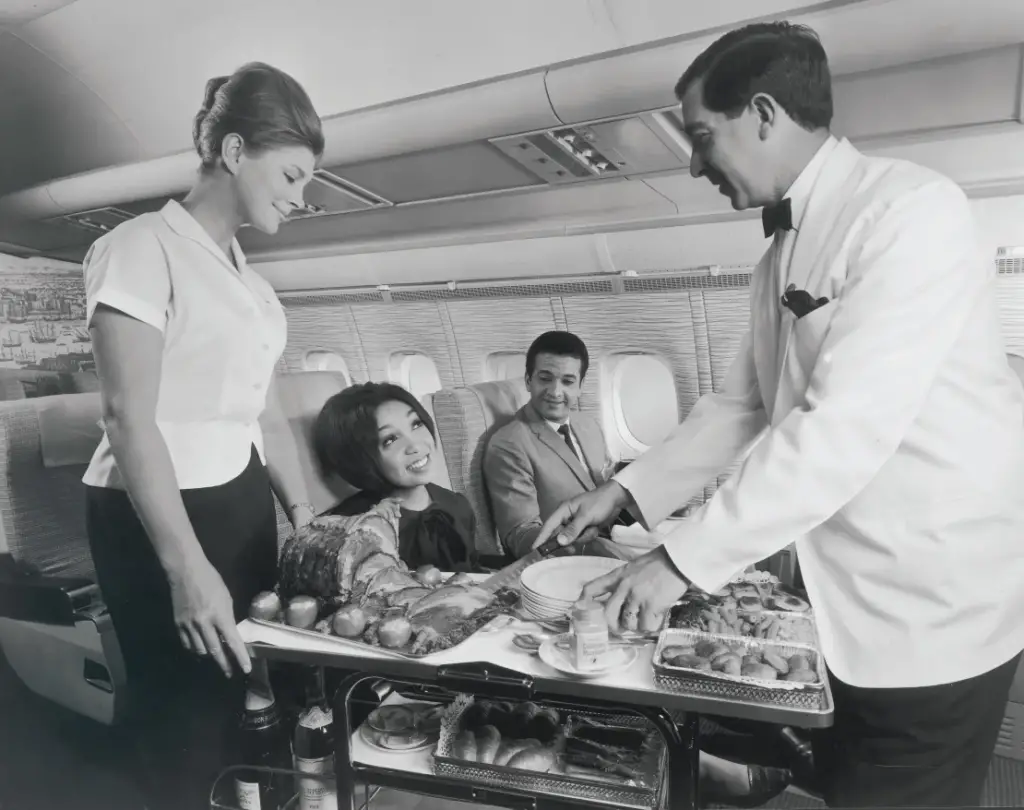Besides the imperfections, the golden age of flying, a period in aviation history roughly spanning from the late 1940s to the 1970s, represents a striking chapter in the history of flying. It was a time when air travel captured the imagination of the world and embodied the spirit of adventure, innovation, and aspiration.
Flying was a symbol of prestige and not everyone could afford to purchase a plane ticket, no matter the destination.
Life on board used to be completely different than it is today, and if you feel like you are riding in a bus but in the sky while flying these days, in the past, the experience of flying was all about glamour and luxury.
Graham M. Simons, an aviation historian, recalls, “Air travel at that time was something special. It was luxurious. It was smooth. And it was fast.” The seats were spacious, and passengers were offered cocktail lounges, five course meals, and an endless flow of champagne. “People dressed up because of it. The staff was literally wearing haute couture uniforms. And there was much more space: seat pitch – that’s the distance between the seats on the aircraft – was probably 36 to 40 inches. Now it’s down to 28, as they cram more and more people on board.”
Nowadays, booking a flight is as easy as a gentle breeze on a sunny day, carrying you effortlessly to your destination. Back in the day, however, the choices were limited and far more expensive. A return ticket from Chicago to Phoenix was priced at $138 as indicated in a TWA brochure from 1955. This may not sound much today, but when adjusted for inflation, this relatively short journey, not even spanning the entire country, would amount to approximately $1,200 in today’s currency.
Guillaume de Syon, an aviation history expert, says, “[Depending] on the route, it was four to five times as expensive to fly in the Golden Age,” which is why flying was only reserved for the wealthiest individuals.
The service, as well as the food was top notch. “The airlines were marketing their flights as luxurious means of transport,” Simons added.
Suzy Smith, a former flight attendant, recalled: “We started with canapés, then we came out with a cart with appetizers, which included beluga caviar and foie gras.”
The rules and the security weren’t as strict, so flying brought passengers a sense of freedom. “It was like going to a cocktail party. We had a shirt and tie and a jacket, which sounds ridiculous now, but was expected then,” Keith Lovegrove, a fan of old-fashioned flying said.
Pan Am was one of the airlines that really stood out. Joan Policastro, who worked for them, described those days like flying with the stars. “My job with Pan Am was an adventure from the very day I started,” she said.
The flight attendants were dressed to impress. They were expected to provide exceptional service while adhering to strict appearance and behavioral standards. Airlines imposed requirements on attire, hair length, weight, and even marital status. Uniforms became increasingly revealing by the 1960s, reflecting the era’s emphasis on presentation.
Although safety was nowhere near as good as today, everything else made flying an exceptional experience during the Golden Age of flying.





